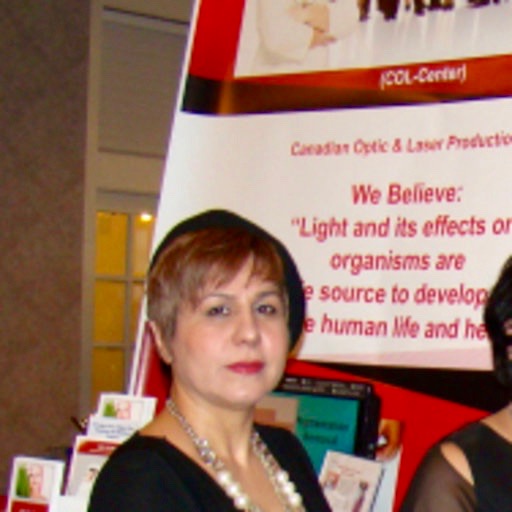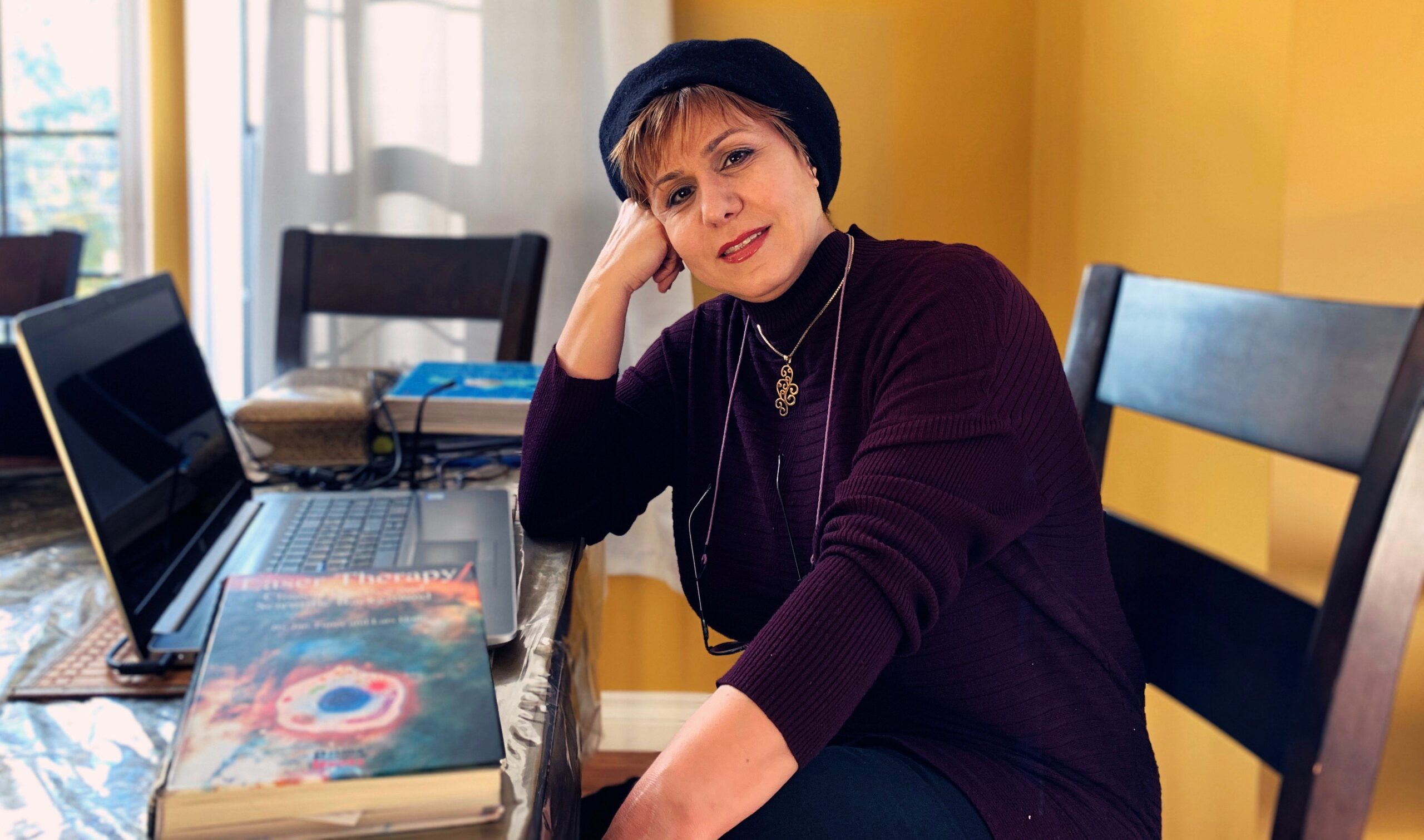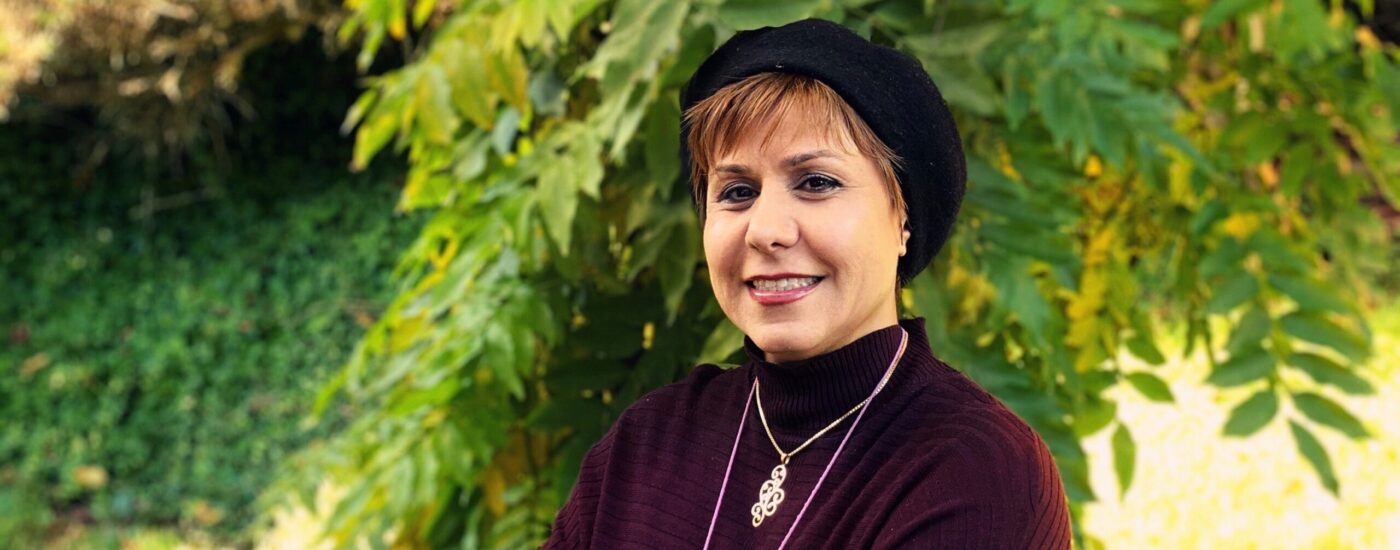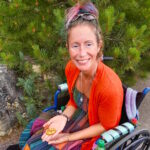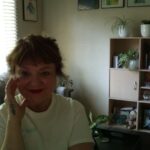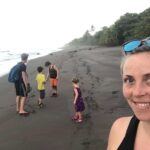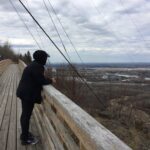Today we raise our fists high and put our hands together in celebration of our Feature Girl Warrior, MD and Anesthesiologist from Tehran Medicine University, Soheila Mokmeli, a senior medical researcher, a medical & aesthetics laser specialist and an award-winning instructor. Soheila has been practicing laser therapy since 1998. She got her diplomas of Laser Medicine from Russian State Research Center of Laser Medicine in 2001 and Advance Laser Therapy from Swedish Laser Medical Society in 2004. Soheila worked as an Assistant Professor of Anesthesiology at Zanjan Medical faculty from 1995 to 2001. She was the director of Research Center of Laser Department of Milad Hospital in Tehran from 2002 to 2010. Here, she served as a mentor and counselor of medicine and nursing students and MDs for academic and research centers’ projects in the laser field. Soheila coordinated multidisciplinary laser therapy projects, prepared educational outlines, and supervised more than 54 research and thesis papers. She was the President of Medical Laser Association in her own country from 2009 to 2011. Soheila was awarded as the pioneer of Photo Medicine in her own country in 2012 and received an award for the Best Research Study from European Medical Laser Association (EMLA) in 2007. Currently, she is the consultant of laser therapy and education administrator in Canadian Optic and Laser Center. If that wasn’t enough, Soheila is also researching COVID-19 and the effect of laser therapy on lung tissue and has developed a therapeutic protocol for COVID-19 by PBMT. And for that we say a heart-felt and grateful THANK YOU!
What makes you a Girl Warrior?
I do not know if I am warrior, or just a regular person. A warrior has the intrinsic strength to take the necessary steps to get out of most crises. Sometimes our brain gets stuck and we cannot think right. A fighter can remove the mental blocks that push us to the edge and the breaking point. I consider anybody a warrior if they can manage and recognize a goal and take the proper and necessary steps toward that achievement. Moreover, I believe anybody who survives and starts a recovery and healing process from a crisis is a warrior too. During five decades of my life (yes, I already passed through those) I can mention, I made critical decisions and I also recovered from some deep injurious pains. I have discovered the value of human soul and believing in ourselves and in our intrinsic power to heal from any pain and psychological wounds we may suffer. I believe those survivors to be warriors, and if, based on my path to overcome my own personal crises, I would be considered one as well, it would be great honor.
You survived unimaginable horrors during the war between Iran and Iraq. What got you through those years and what did you learn about yourself?
War can change you and can have a deep and perpetual effect on your soul. We can learn important lessons in life from wars, and these lessons are for both soldiers and civilians. My lessons happened the time we rushed to the shelters during the enemy’s attack and bombardment of the city. I was 14 years old and in charge of taking my little siblings to the shelter, holding them close in my arms to keep them safe, and washing their fears away. I realized I am stronger than what I expected of myself. We all learned to be thankful for the soldiers who risked their own lives to allow civilians to live in peace. We are blessed if we are healthy and have our family around and are able to follow our dream. I saw how many people lost their beloveds, a son, daughter, husband, father, mother, and others. I witnessed how much they suffered from losing them and how profoundly this pain impacted and excruciated their soul and hearts. War taught me to appreciate every moment and things we have, such as being healthy and having breakfast and a simple talk with our loved ones, or perhaps going for a walk and breathing fresh air without fear of being targeted by bombs and fear of losing our beloveds. I learned to make every second of our lives count and to treasure freedom, peace, and joy.
Why did you choose to specialize in anesthesiology and intensive care when you were in Medical school?
When I was 17, I was admitted in Med School during the war between Iran and Iraq. I grew up and was trained there with war victims and I saw, touched, and treated dying and badly wounded soldiers and civilians’ sufferers. It strongly influenced my heart and soul decisions, especially the times that the hospitals were repeatedly bombed by the enemy and we had to evacuate the hospitals and move the patients. That was the reason I chose to specialize in anesthesiology and intensive care; to help the patients in an emergency with special intensive care needs and reduce their pain and suffering. Gunshot wounds and damage from explosions resulted in many amputations in soldiers and civilians. Wounded soldiers often experience substantial pain. I watched how much they suffered and how the emotional and physical pain burned down their soul and body, and how it affected their family. As an anesthesiologist, I had worked out how to treat the pain commonly felt after a limb is removed, called phantom limb pain. As a pain manager specialist, I could help patients, reduce their pain, and assist them in tolerating the healing process.
What impact did the Finnish researchers at the conference you attended in 1997 have on the trajectory of your medical career?
I have always searched for different and alternative modalities in pain reduction. Consuming lots of opium for an analgesic effect mostly leads to addiction to these medications and would influence patients’ personality and social life. That is why, when I learned about the analgesic effect of Photo-biomodulation therapy (PBMT), I fell in love with this modality. The first time, I heard of PBMT was at a conference in 1997 where I was introduced to a group of medical researchers from Finland who reported five years of follow-up on diabetes patients who received laser therapy to manage their diabetes. I thought, “wow, these researchers started their work a while ago, and now they are reporting on the five-year follow-ups!” It was just so amazing and mind blowing. I started to learn more about laser therapy and photomedicine.
Some wounded veterans that crossed my path during their treatment had come to use painkillers and opioids for a long-time post-surgery and needed to keep using them and were addicted to the opium. Dependence and overdose were the side effects. I always wanted to reduce the risk of prolonged opioid use after surgery. When I found out about the analgesic effect of laser therapy and its use in the pain clinics for acute and chronic pain, I thought this is the treatment I have been looking for. PBMT is a natural, organic, safe, and effective treatment. Later, I completed the medical laser therapy training and received a Diploma of Laser in Medicine from the Russian State Research Center of Laser Medicine, and I participated in the advanced training in medical laser therapy in Sweden through the Swedish Laser Medical Society.
Why did you start the Canadian Optic Laser Centre?
When I moved to Canada, I knew that PBMT was not known very well in Canada. It was my mission to spread the knowledge and share my experience with medical and scientific community for the best of our society. This is the reason I co-founded the Canadian Optic and Laser center (COL Center) with my husband, as the first specialized center to research laser and bio-photochemical reactions in health subjects. The COL Center is the first center to open in the field of PBMT research and training in British Columbia and to design and manufacture related sets and systems. Additionally, the COL Center provides workshops and training in the field of laser technology. The COL clinic offers various laser services for clients based on the most recent research and most updated technology.
Despite PBMT’s proven successes, the fact remains that it is not a part of the medical textbooks and classic training in North America and it has not yet found its rightful place within the medical system in terms of identification from both health professionals and the public. Photomedicine needs to complete a long journey to be introduced to medical and health professionals and people too.
What is photobiomodulation therapy and what are the therapeutic benefits of light on the body?
Photomedicine has 60 years of history. The therapeutic benefits of light on the body have been recognized from the earliest times. Phototherapy (light therapy) was practiced in ancient Egypt, Greece, China, and India. The Egyptians used sunlight as well as color for healing. Photomedicine uses the photons and light in medicine to image or treat diseases and different health issues. When we review the effect of laser therapy, we realize how this phenomenon is like the photosynthesis in plants. Photosynthesis is the process by which green plants convert light energy into chemical energy. Green plants capture the light energy and use it to transform water, carbon dioxide, and minerals into oxygen and energy-rich organic compounds, the food for plants and every living being. The same process happens in PBMT within human cells and it ends with a faster healing process, collagen production, and analgesic and anti-inflammatory reactions. Because of these reactions, PBMT has different applications in different branches of medicine. One of my favorite applications of PBMT is in women’s health. I believe mothers are the backbone of the family and society and they need more support and attention to their health. I have used the laser therapy in women’s health for wounds after childbirth, Cesarean sections, mastitis, breast cancer, mastectomy, scar revision, stretch mark reduction, lymphedema, painful menstruation, musculoskeletal pain and more to improve the healing process and reduce the pain.
What’s the biggest decision you ever made?
In our personal lives, every person has faced ups and downs and sometimes we are trapped in a storm that influences and shakes our lives in a different direction. I can say the biggest decision for me was the time I decided to move and leave my own country. It was the hardest decision I have ever made. Leaving my beloved family, friends, career, and what I earned working hard for a long-time was not easy for me. But I needed a reset button in my personal and emotional life, to give a second chance to myself, to build everything from scratch and start from zero. It was the hardest decision of my life, it was painful and still it hurts and tears my eyes, but I think it was worth it to pull back myself and start a new beginning with my husband and my son.
You’ve won many awards. Congratulations! Is there one that stands out above the others and why?
Among the awards I have received, the one that I was honored as the pioneer and instructor of PBMT in my own country stands out above the others. I always enjoy being a mentor and a coach. Sharing my knowledge and experiences with my students brings me joy and is a wonderful feeling. Knowing my students would offer the PBMT as an alternative treatment to their patients and help them in their healing process, means a lot to me. During the past 20 years, my research study has focused on developing different PBMT and laser protocols for better results and applications in health and cosmetics. I think the key point to using this modality, as part of our health system is medical and health professionals. We need to educate medical and health professionals about the effects of PBMT. Moreover, we should spread the knowledge and educate the public on how to get the advantage of the benefit of this natural, safe, organic, and cost-effective treatment.
What have been the biggest challenges or obstacles that you’ve overcome – personally and/or professionally?
After graduation, I started my career in the Medical School at Zanjan University as an assistant professor and I was the first female anesthesiologist in the province. It was a substantial challenge for me to establish myself as a specialist in a male-dominated world, to confront all the discrimination at work as a woman and earn the credit and respect I deserved. I had to be very strong physically and emotionally and be ready for many busy and exhausting overnight shifts. I was challenged with many difficult and high-risk patients and surgeries to prove my professional work capabilities and skills. I also had to show my ability to manage a department and build and earn the trust of the fellow surgeons. The male colleagues said that I did not belong there, and I was a woman in the wrong place. I worked relentlessly with my students and tried to help them in their journey and to show each one how she/he could be a better person.
Tell us about your research in COVID-19 and the effect of laser therapy in lung tissue. Are you seeing results?
When the COVID-19 pandemic started in the world, countries were shut down, and the world was faced with many patients and a shortage of hospital and ICU beds. I have experience in treating patients with respiratory conditions like asthma and COPD with PBMT, and I presented a study in 2008 about it. I thought deeply how I could help; everybody has a responsibility and plays a part in this world. PBMT has been used in respiratory tract diseases since 1978. Empirical practice on over 1000 patients has produced data pertaining to chronic pneumonia, acute pneumonia, asthma, and chronic bronchitis in children, adults, and the elderly. Common findings include reduced chest pain and heaviness; normalization of respiratory function; improved blood, immunological, and radiological parameters; and shortened recovery times. I started to research COVID-19 and the effect of laser therapy on lung tissue and developed a therapeutic protocol for COVID-19 by PBMT.
We conducted a research study in the U.S. and the primary results are very promising. A modulation of inflammatory factors and a boost to healing are necessary to help COVID-19 patients come off the ventilators. PBMT has strong and significant proven anti-inflammatory effects at multiple levels and is safe and noninvasive and has been used for decades in pain management, wound healing, and health conditions including diseases of the respiratory tract. PBMT was combined successfully with standard medical care to optimize response to treatments, reduce inflammation, promote healing, and accelerate recovery times. Our group successfully published three articles in the past six months. I hope more academic research centers join to our group and conduct more research to find an effective treatment for COVID-19. I spent hours of voluntary works on this project and I strongly believe in this alternative treatment.
What do we need to know “for sure” about photobiomedicine?
Most people are confused about laser therapy or PBMT and high-power lasers that have been used in cosmetic surgeries. PBMT is also known as cold laser therapy, or low-level laser therapy. PBMT applies visible light and infrared beams and the light source is placed in contact with the skin, allowing the photon energy to penetrate tissue. Light’s photons interact with various intracellular biomolecules in human cells similar to photosynthesis in plants, to restore normal cell function and enhance the body’s healing processes. This contrasts with the thermal effects produced by the high-power lasers that are used in cosmetic and surgical procedures to destroy targets like hair, pigmentation, and tattoo removal, and similar procedures.
What would you say to your younger Girl Warrior?
It is okay to be scared, to kneel, to fall, and to carry on in pain, but certainly do not stay there forever. It is a rough path in this world for you and you will find the right path and the strength to follow and enjoy it. You need just to take baby steps, even if it is painful. The pain never lasts for a long time; it is against our nature. This pain involves both the mind and the body; you have the capacity to alleviate your emotional pain by changing the way you perceive it. You will get used to it and your mind will surge your body with a new flow of energy and endorphins to tolerate it and stand up. Just believe in yourself and your intrinsic power.
What would you say to future Girl Warriors looking for inspiration?
Just keep moving and rest enough to continue to explore the world, which belongs to you. And be aware there is no limit in the skies. Always have hope and if there are closed doors in your way, search for another one or make your special key to open the doors. Search for alternative pathways and do not be ashamed or scared to ask for help when you need it. Enjoy being yourself! Our girls should follow their dreams and stand up for themselves.
Who is/are your Girl Warrior hero(s) and why?
One of my Girl Warrior heroes is Danielle Steel, and she has been my hero since I was a young girl because of her hard work and stories that she shared with the world. Her words offer wisdom and humor, inspiration, and comfort, and, above all, joy, after passing through the storms in life. I always admire her and envy her for being so strong and being a mother of nine children while working nonstop and being happy and satisfied. When I moved to Canada, I saw Arlene Dickinson, the Canadian businesswoman, investor, and author on the Dragon Den TV show. I learned she has “some big dreams which she needs to chase” and I thought she was a wonderful and strong woman. Since then, Arlene has been another hero for me. On a trip to Toronto, I saw a big poster of her, and I took a picture with me standing next to her (poster)! Hopefully, someday I can meet her in person.
Blue Sky it. No boundaries here, just limitless opportunities. Where do you see yourself in 5 years?
Sharing the light with more people! Spreading the knowledge and my expertise with other health professionals and running a bigger training institute with more students.
If a biography were written about your life, what would it be called?
My dream “a pain free world with a spark of light.” There is Light at the End of the Tunnel.
To learn more about Soheila’s fascinating work, head over to her website: Canadian Optic and Laser Center (COL Center): https://col-center.ca/
And on here: https://www.researchgate.net/profile/Soheila_Mokmeli
Connect with Soheila on LinkedIn: https://www.linkedin.com/in/soheila-mokmeli-md-44347b66/
Follow COL Center on Facebook: https://www.facebook.com/victorialaserclinic
To learn more about low level laser therapy as a treatment for Covid-19 watch this important episode of Up Front with Dan Peruzzo where Soheila is a guest:
